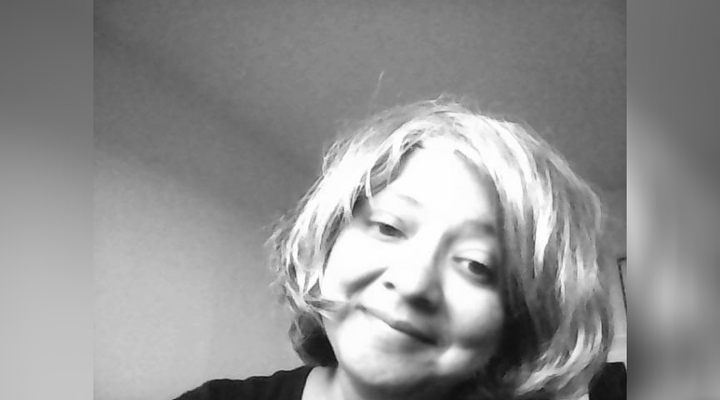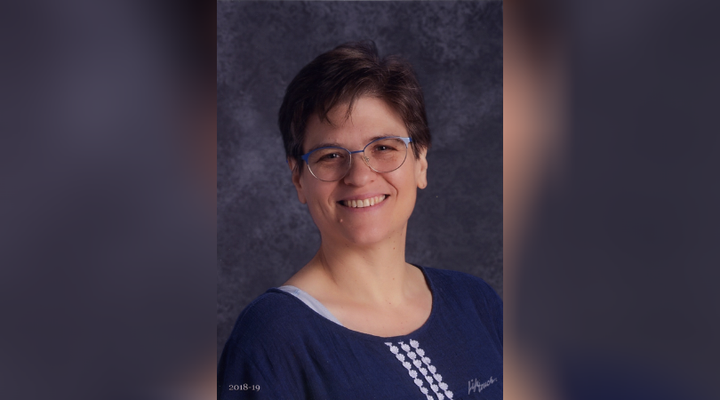As teachers prepare to be the new frontline workers in the COVID-19 pandemic, many say they don’t feel their school reopening plan is safe.
In response to a callout, HuffPost Canada heard from over 100 teachers about their feelings on their province’s back-to-school plans.
Many teachers are concerned about their own health; some have updated their wills, or consulted their doctors about the risks of returning to school. Many are also frightened of passing the virus on to older family members, or of students or their families becoming sick.
Still, most teachers acknowledge the benefits of going back to school: Children need socialization, and school will give them a routine and a sense of structure to their days. But while many say the face-to-face instruction will be beneficial for students, they still warn that rushed back-to-school plans could have disastrous consequences.
Ontario teachers feel left in the dark
Just over two weeks before the start of the school year, Sunita Albuquerque still doesn’t know if she’ll be teaching in-person or online.
The teacher of 22 years is immunocompromised and her husband has a serious heart condition. She submitted a medical accommodation document to the Toronto District School Board, but hasn’t heard back yet about where she’ll be teaching — or which grade — when classes start in September.


“It’s all really muddled and up in the air right now,” she told HuffPost Canada. “For those of us who’ve had medical notes, we don’t know what the online option is going to be. We don’t know if we will be sent back into the classroom.”
Before now, Albuquerque says, teachers have largely avoided the frontlines of the COVID-19 pandemic. But now, approaching a semester that’s expected to include — or at least begin with — in-person instruction, some won’t have a choice about returning to school.
“I don’t think I’ve ever felt so vulnerable and so much at risk in my whole life
Albuquerque has been making sure her will is in order, bills are paid, donating clothing so her family wouldn’t have to do it in case something happens to her, and telling her family more often how much she loves them.
“I don’t think I’ve ever felt so vulnerable and so much at risk in my whole life,” she said.
In response to HuffPost’s questions about the health risks teachers face going back to school, Caitlin Clark, a spokesperson for Ontario Education Minister Stephen Lecce, said parents expect educators to return to work in September “knowing that if they are sick, they benefit from the most generous sick leave program in Canada for teachers and educator workers.”
Teachers flag concerns about social distancing in B.C.
As a teacher since 1996, Bettie Marchiori is used to projecting safety to her students.
In an earthquake drill, the Surrey, B.C. teacher would be able to stand in front of her classroom as alarm bells rang and assure students they’re safe.
In a pandemic, though, she’s less certain.
“In this case, there’s no safety to project,” Marchiori told HuffPost.

In her classroom, her 30 Grade 4 students won’t be able to properly distance. “My kids are going to be breathing on each other,” she said.
In March, when classes moved online, she welcomed the challenge. Some of her Grade 6 students thrived doing remote learning; working in small, digital groups she saw them engage in deep thinking they didn’t display in the classroom.
She’s preparing to use the September in-person start to create an environment where students can be successful in the event that all classes move online.
“Without physical distancing in place, in my mind, there’s no doubt that it’s going to fail,” she said of B.C.’s back-to-school plan.
A spokesperson for the province’s ministry of education said while students should be spread out as much as possible, students within a learning group won’t be required to maintain physical distancing all the time.
“Schools must consider different classroom and learning environment configurations to allow distance between students and adults,” the spokesperson said.
Marchiori’s husband has severe asthma and her two children are both on the autism spectrum. The only place any of them have gone since March 13 is their vet’s office. Groceries and anything else they need are delivered to their house.
She said she could only get an accommodation to teach online if her husband needed her as a caregiver. (The ministry spokesperson said school districts are working with individual staff members’ accommodation requests that will be assessed on a case-by-case basis.)
“If somebody brings home a bug, we all catch it,” Marchiori said. “We’re careful — we were careful before. We wash our hands, we get our flu shots, all of that. But it’s scary to not be in control.”
Alberta ‘doesn’t want things safe for teachers’
As Grade 2 teacher, Angela says she’s used to being sneezed on by students. Now, the Calgary, Alta. teacher isn’t sure what the plan is for incidents like that in classrooms — or other crucial aspects of her province’s back-to-school plan like emergency staffing or teachers’ mental health.
“I feel like I don’t know anything,” the teacher, who asked that her real name not be used to avoid retribution from her employers, told HuffPost.
WATCH: Feds issue guidance on reopening schools. Story continues below.
Angela is planning to run some of her lessons through small group activities, making “mini cohorts” in her class. She will ensure students are wearing their masks properly and sanitize supplies before and after students touch them.
But, she said as she talks about what her days may look like, with extra sanitizing of the classroom, monitoring students’ entry in the morning and recess and planning her physically distanced lessons at night, she’s realizing she still has a lot to figure out to ensure student learning doesn’t suffer.
Colin Aitchison, press secretary to Alberta Minister of Education Adriana LaGrange, said the province understands teachers want a safe return to work and will continue to follow the advice of their chief medical officer of health. Guidelines will be adjusted “as necessary” and the government will “continue to meet and listen to feedback provided by education stakeholders,” Aitchison said.
… I don’t think they want things safe for teachers …
Although her board hired 500 more substitute teachers, Angela is also worried about supply teachers’ willingness to work and potentially expose themselves to the virus, considering they may assume the teacher they’re filling in for could have contracted COVID-19 in their classroom.
“They’re basically going to assume they’re walking into a classroom that has had COVID exposure,” she said. “That’s stressful — a lot of [substitute teachers] aren’t going to want to do that.”
Aitchison, the minister’s press secretary, said local trustees are in the best position to make decisions about staffing and substitute teachers.
Angela’s board staggered start dates, but she said she wanted to see this come as a government directive rather than it being up to individual school boards.
“As much as you get the lip services of ‘We want things safe for students and teachers,’ I feel like they want things safe for students to keep parents off their backs — but I don’t think they want things safe for teachers, other than what they have to do,” she said.
Despite her concerns, Angela said she sees the benefits in returning to school for students. Technology can’t replace the human interaction and care that teachers provide at school, she said, and it’s challenging to do that relationship building through remote or online learning.
While she hopes that students will be excited to return and take the new changes in stride, she also worries about heightened anxiety in making mistakes on the new protocols or struggling to adapt to new and changing guidelines.
Masks not mandatory in Quebec classrooms
Quebec’s school reopening guidance recommends, but does not mandate, mask wearing in classrooms — only for students in Grade 5 or up in hallways or common areas — or physical distancing in classrooms.
Alexandra, a Grade 5 teacher who asked to only be identified by her first name, said she thinks outbreaks will happen in Quebec’s schools because of this guidance. When schools in the province reopened in May, 41 students and staff tested positive for COVID-19.
The teacher said she’s worried students, especially younger ones, may be confused why they don’t have to wear masks most of the time at school when they’re otherwise required for people 12 and older on transit and in public places.
Teachers will have to remind students “this is the school rule,” Alexandra said. “What happens outside of the school walls [for COVID-19 precautions] is completely different.”
We are preparing both for reopening and closure at the same time …
Alexandra said she wants to see the government ask for teachers’ input on how to make schools safe.
“I feel like the government — yes, they made this plan — but I don’t think they realize how small and how limited schools are,” she said, noting some schools have small classrooms or older ventilation systems that could pose risks to students and staff.
A spokesperson for Quebec’s Ministry of Education did not respond to HuffPost’s request for comment.
Although they were told to prepare for in-person classes, teachers were also told to bring their belongings home every night in case schools suddenly close, Alexandra said.
“We are preparing both for reopening and closure at the same time, which is quite a bit on our plates.”
Calling all HuffPost superfans!
Sign up for membership to become a founding member and help shape HuffPost’s next chapter
Credit: Source link